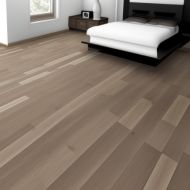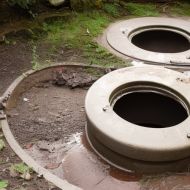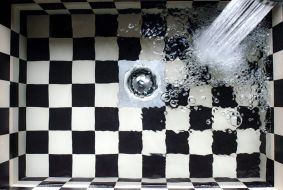When you’re busy trying to keep up with the daily demands of life – from errands, family, and work commitments – it can be hard to find the time, energy, and enthusiasm for those small but essential jobs around your home. Jobs such as decluttering or junk removal can seem too daunting, taking away valuable hours of your free time. Hiring a professional junk removal service can provide a simple solution that provides many unexpected benefits. This blog post will detail exactly why hiring a professional is an investment that pays off in both financial and personal gains.
Why Hiring a Professional Junk Removal Company is Beneficial
When it comes to getting rid of junk, it’s easy to become overwhelmed and stressed by the task at hand. That’s why hiring a professional junk removal company is not just convenient but also beneficial. A professional junk removal service has the necessary expertise, equipment, and manpower to handle any type of junk removal needs effectively and efficiently. They can take care of the heavy lifting, sorting, and disposal, leaving you free to focus on other important tasks. Additionally, a professional junk removal service can help you avoid legal and environmental risks associated with improper disposal, giving you complete peace of mind. So, if you want to get rid of your junk and do it in the most stress-free and responsible way possible, consider hiring a professional junk removal company today.
Types of Services Offered by Professionals
As professionals, we offer a diverse range of services to cater to our client’s needs. From legal advice to healthcare, and financial consulting to career guidance, we specialize in providing expert assistance to help individuals and organizations succeed. We understand that every situation requires a unique approach, which is why we work closely with our clients to develop tailored solutions that meet their goals. Our commitment to professionalism and excellence ensures that we deliver quality services that exceed our client’s expectations. Whether you’re looking to start a business, navigate a legal issue, or optimize your health, our team of professionals is here to help you achieve your objectives.
Safety Considerations for Removing Large Items
When it comes to removing large items, safety should always be the top priority. Whether you are clearing out a construction site or moving heavy furniture, there are several considerations to keep in mind. First, make sure you have the proper equipment for the job, including gloves, goggles, and a sturdy lifting device. Second, assess the area where the item will be moved and ensure that it is clear of any obstacles or hazards. Third, communicate with your team and establish clear roles and responsibilities to avoid any confusion or accidents. Finally, make sure you take breaks as needed and stay hydrated to maintain peak physical condition. Ultimately, prioritizing safety when removing large items is key to a successful and accident-free project.
Tips for Choosing the Right Junk Removal Company
Choosing the right junk removal company can be a challenging task, but it is a decision that should not be taken lightly. It is essential to work with a professional company that can handle the job efficiently, safely, and without damaging the property. One way to determine a company’s professionalism is by checking their licenses, certifications, and insurance policies. Additionally, reading reviews and testimonials from previous customers can give insight into the company’s level of service and reliability. A reliable company should provide transparent pricing, with no hidden fees or charges. By taking the time to carefully evaluate and choose the right junk removal company, you can ensure a stress-free experience and a clean and clutter-free space.
Ways to Save Money on Professional Cleanup Services
As a professional in the field of cleanup services, I understand the importance of maintaining a clean and tidy environment. However, I also know that these services can add up in cost over time. That’s why I recommend a few simple ways to save money on professional cleanup. First, consider scheduling regular cleanings to ensure that your space stays consistently neat and tidy. This can prevent the buildup of dirt and grime that can be more expensive to clean later on. Additionally, ask about package deals or discounts for bundling multiple cleaning services together. Finally, don’t be afraid to negotiate or shop around for the best price. By implementing these strategies, you can keep your space clean without breaking the bank.
What Happens to Your Junk After it is Removed from Your Home
After your junk is removed from your home, the next destination is likely a sorting facility. Here, items are sorted into categories like recyclables, hazardous waste, and e-waste. The recyclables are then sent to recycling plants where they can be transformed into new products. Hazardous waste is carefully disposed of to ensure it doesn’t harm the environment. E-waste, which includes old electronics, is dismantled and recycled or responsibly disposed of to prevent harm to both people and the environment. Properly disposing of junk not only benefits the environment but can also create new job opportunities and stimulate the economy through the recycling industry. So, what may seem like just a simple act of cleaning out your home can have a positive impact on the world around us?
In conclusion, hiring a professional junk removal company can be very beneficial in getting rid of bulky and hazardous materials from your home. Compact items like furniture and appliances can be safely removed with the help of experienced professionals who know how to use proper lifting techniques and disposal methods. Before choosing any one junk removal company, it’s important to do some research to determine which company offers the best price and services for your specific needs. After they have taken your unwanted possessions away, you can rest assured that all rubbish will either be recycled or properly disposed of according to local laws. To discover how a professional clutter-clearing service can benefit you, contact a trusted junk removal in Chicago, IL today.

 April 29th, 2023
April 29th, 2023  Arnold
Arnold 




